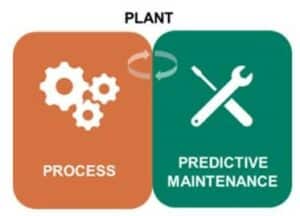The idea
It is not easy to navigate through the sea of technological solutions related to predictive maintenance. Being a Product Marketing Manager, it is my job to understand and test the real potential of what I promote, in this case the Yokogawa wireless sensors called Sushi Sensors which monitor parameters such as vibration, pressure and temperature. Thanks to their high environmental resistance and to their ability to communicate over very long distances (7 km line-of-sight) via LoRaWAN network, they are ideal for this purpose. The keystone of these systems is obviously artificial intelligence, to reach where human data analysis might not go. Yokogawa offers cloud services, but also on-premises asset monitoring to fulfill the needs of customers who want to manage data locally. Here is where my experiment comes in: I was looking for a way to make the most out of our GA10 software, an application that, thanks to a dedicated option, allows you to set up and build a Sushi Sensors system in an ultra-fast and simple way, enabling us to oversee our plant’s performance at any time.
The experiment
Fully understanding the potential of a tool is not always easy based only on leaflets and manuals. For this reason, having three vibration sensors available, I put myself in the shoes of a user interested in this type of solutions and I tried to build something capable to show, in a simple and immediate way, what you can achieve using Yokogawa’s solutions. I therefore created:
- a dashboard that shows the instant data detected by the sensors (acceleration, speed and temperature) as well as their trend (Fig. 1)à http://www.sushisensordashboard.com:1880/ui/
a chatbot, able to query the system via text commands (Fig. 2) à https://t.me/IIOT_sushi_cloud_bot
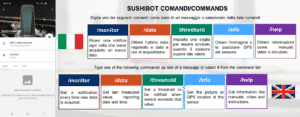
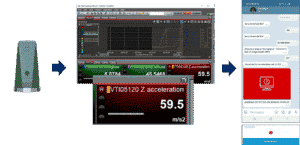
Predictive maintenance, a growing market
As of today, predictive maintenance solutions are flourishing at a very fast rate. By a quick search on the internet you can find the most disparate solutions, coming not only from the companies that are historically active in the Operation Technology (OT), but also from those that operate in the Information Technology (IT). This is a clear evidence that these two worlds are converging to adapt to our new way of living, ever more digital and interconnected, even more so as a consequence of the pandemic. New technologies are not only the drivers but also the key to address new important issues such as the aging of the working population and sustainability, with all its implications, including new strict environmental rules, such as emissions regulation. Moreover, the growth of technology markets such as IIOT, wireless, artificial intelligence is a tangible proof of this process.
Digital transformation (DX)
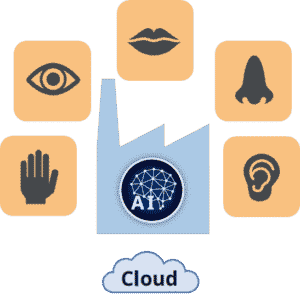
It is therefore inevitable to foresee a transformation for plants and factories: they will very likely come to life to become our Nr. 1 employee. Let’s think about it for a moment: sensors are equipping systems with the five human senses, the cloud and communication protocols provide a memory to store data and the ability to interact with us. The last piece of the puzzle is Artificial Intelligence (AI). We give a brain to our factory so that it can act independently, evaluating the external conditions, thus exponentially increasing its efficiency (Fig. 4). Nevertheless, this evolutionary process is difficult and delicate, especially if you try to manage it on your own. If we don’t want to end up in a Mary Shelley’s novel and deal with a monster, a digital Frankenstein instead of our best employee, we must rely on a trusted partner: Yokogawa is the best candidate.
Yokogawa IA2IA
Yokogawa has made “digital transformation” a corporate priority. In fact, it has already published a guideline to outline in detail every step of this long journey called IA2IA, aimed at taking us from Industrial Automation to Industrial Autonomy (Fig. 5). Since well over a century, Yokogawa has been looking straight into the future and was in the front line already during the previous great revolution that affected economy, business and also the manufacturing world since the ‘80s, leading to the “digitization” of data due to introduction of PCs. Not surprisingly, Yokogawa is one of the 100 most sustainable companies in the world.
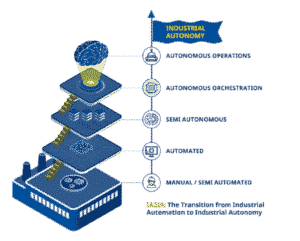
Benefits of predictive maintenance
It appears evident that predictive maintenance, that is to say prevention or detection of malfunctionings before they escalate, is a pillar of this journey toward digital transformation. Predictive maintenance stands alongside the process (Fig. 6), it does not overturn it, entailing fewer risks and bringing several immediate benefits
- becoming familiar with technologies and concepts related to digital transformation. Ideas and methods that can then be easily implemented in all departments of the company
- real and tangible economic benefits.
If we consider that an efficient maintenance:
- reduces, if not eliminates, unexpected plant shutdowns
- reduces maintenance downtime
- reduces spare parts that need to be kept on stock
it is easy to understand how this solution leads us to cost optimization and a subsequent maximization of profits. Another interesting aspect is related to safety: systems which are not perfectly maintained can constitute a danger to the safety of operators who, at times, risk their lives due to deficiencies in controls. Maximizing safety is a fundamental aspect for any company and it brings an indirect economic return. Last consideration: in a time of global pandemic, the ability to remotely monitor our plants, from anywhere, 24/7, is an unparalleled advantage.
Conclusions
Yokogawa offers predictive maintenance solutions that integrate artificial intelligence. If you are interested and would like to know more about them, download our “AI Product Solution Book”. Otherwise, please contact your local Yokogawa partner or write to us via the contact form.
Real-time, Model Based Digital Twin for Energy and Emissions Management
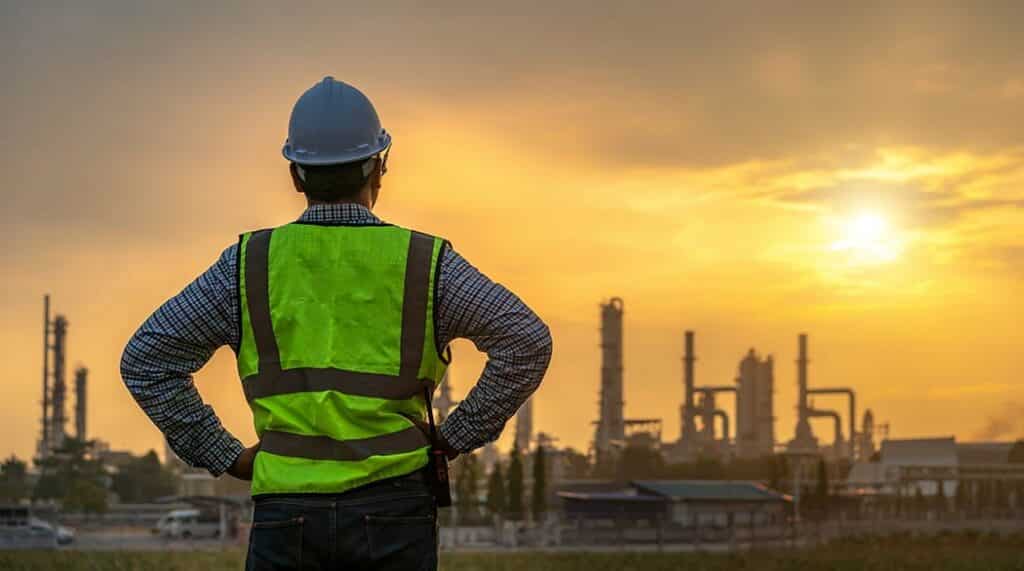

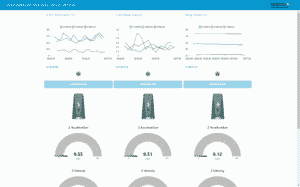 a chatbot, able to query the system via text commands (Fig. 2) à
a chatbot, able to query the system via text commands (Fig. 2) à 